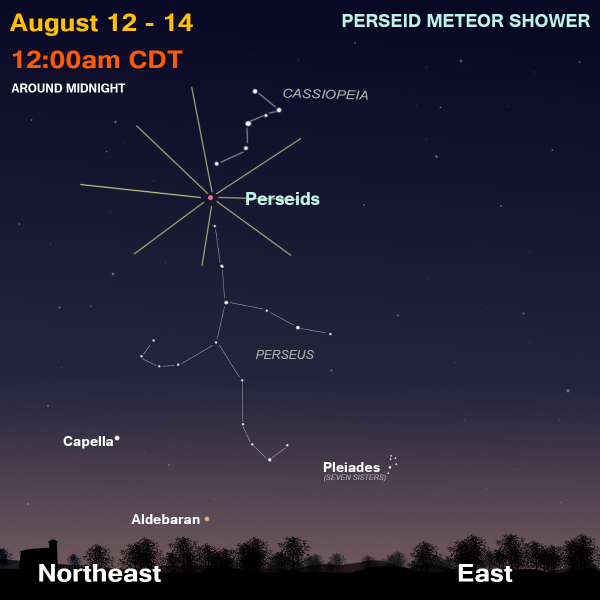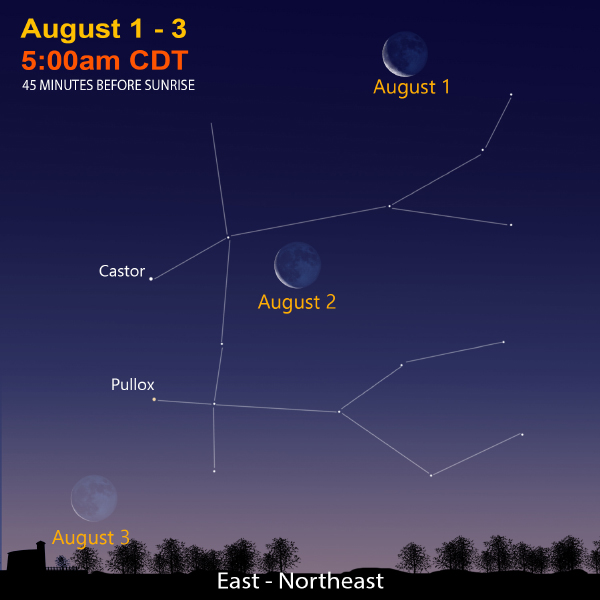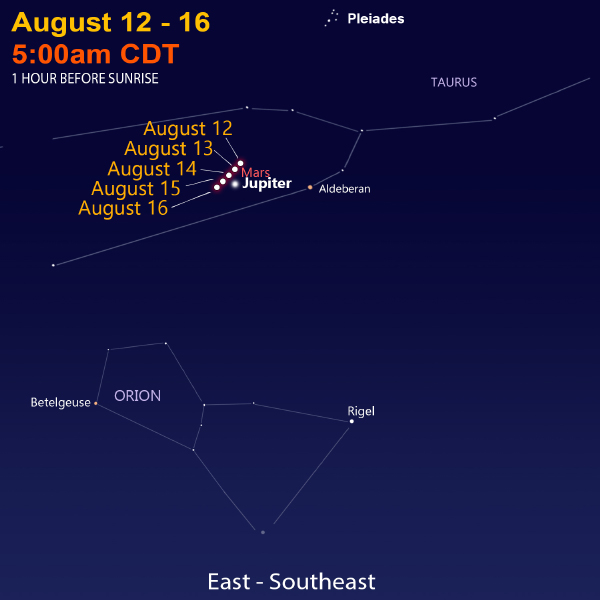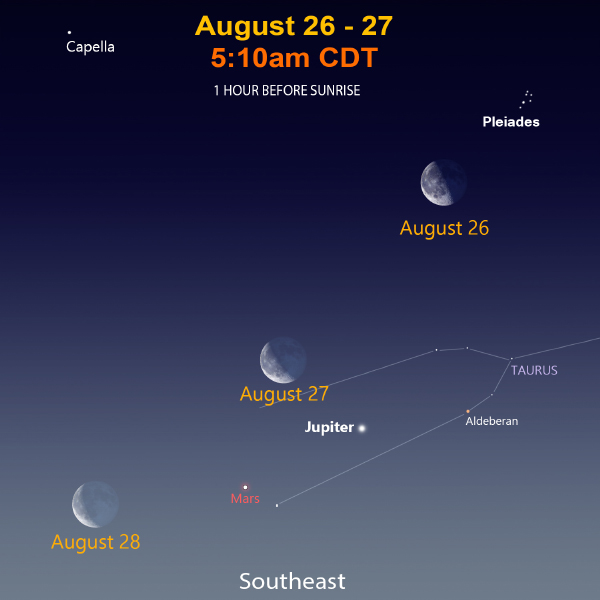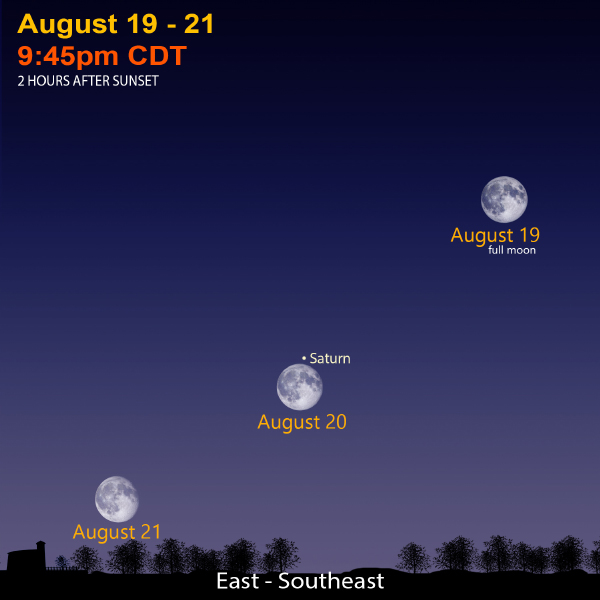Cosmic Curiosities
“That once a year, by hand or apparatus
Is so mysteriously pelted at us?
It is but fiery puffs of dust and pebbles,
No doubt directed at our heads as rebels.”
- Robert Frost, American Poet
Perseids 2024
Once again, the sky will soon rain “shooting stars.”
The best time for the Perseid meteor shower is the morning of August 12, according to astronomy experts.
Estimates vary, but one stargazer located far from city lights should expect to see around 30 meteors per hour—or one every two minutes. If you have a group of four or five people and do a collective count, you may see 50 to 100 per hour. Human eyes can only view about 25 percent of the sky, and most meteors happen in a flash—well under one second!
A first-quarter moon—which acts like a bright city light—will be out of way, setting just before midnight on the night of August 11 to 12. The Perseids radiate (start) from the constellation Perseus. This constellation rises about midnight and is high in the sky about an hour before sunrise—around 5 a.m. CDT in southeast Wisconsin mid-August.
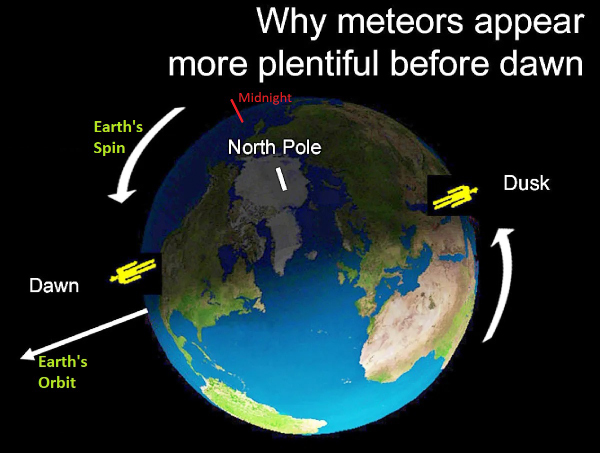
Mornings are almost always the best time to witness meteors. Why? Because around midnight, the Earth’s spin causes the night side to face the direction the Earth is orbiting. Think of a car cruising down the road on a sizzling summer night: More bugs crash into the front windshield than the back window.
Other celestial treats like Jupiter and Mars—and the constellation Orion—can be seen in the pre-dawn skies. See their locations in the Sky Sights section below.
Finally, here are a few meteor fun facts to ponder as you gaze upward:
- A meteor is a very tiny rock—think grain-of-sand size—burning up high in Earth’s atmosphere.
- Meteors travel very quickly, at around 20 miles per second.
- Heat from a meteor vaporizing can reach 3,000 degrees Fahrenheit.
- Most meteors become visible around 60 miles high (or 97 kilometers).
- Very bright meteors are called fireballs or bolides.
- A hundred billion meteoroids greater than one microgram enter Earth's atmosphere every day!
Little or Big Sun?
The sun is rather small when you compare it to incredibly large stars like Betelgeuse and Antares. As you watch our video below, notice how the sun shrinks to almost nothing compared to the larger stars. As the video ends, it’s wild to think that 700 million suns could fit inside Betelgeuse!
While the sun is not a big deal when comparing star sizes, it’s obviously a big deal to us! Our star provides us with heat and warmth and keeps all life going on our fragile planet. And the sun is a massive deal when we think of the entire solar system! What would you guess is the sun’s percentage of mass in our solar system? Fill in the question marks below, then hit play for the answers.
If the entire solar system weighed 1,000 pounds, the sun would tip the scales at 998 pounds. Jupiter’s weight would be one pound. The remaining one pound would be everything else, including:
- The seven other planets (Mercury, Venus, Earth, Mars, Saturn, Uranus, and Neptune)
- Five dwarf planets (Pluto, Ceres, Eris, Haumea, and Makemake)
- 288 moons
- 473 "small-body satellites" (moons of asteroids and dwarf planets)
- 3,953 comets
- Trillions of distant comets in the Oort Cloud
- 1,385,217 asteroids
- Countless meteoroids
The sun may be a little star, but it sure dominates the solar system!
Black and White Holes
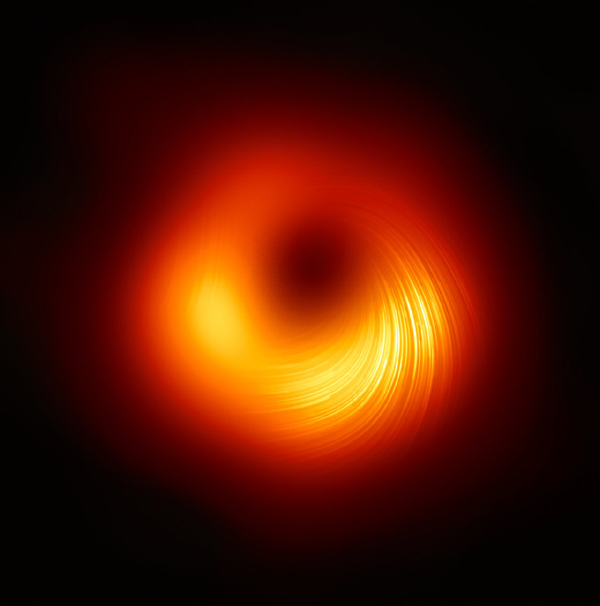
Albert Einstein’s equations helped prove the existence of black holes, but he never believed they were real. Today, we have concrete evidence for the existence of black holes. In fact, just a few years ago, astronomers took the first picture of a supermassive black hole at the center of the M87 galaxy.
What about the other side of a black hole—a white hole? Are those real? Again, Einstein’s theories predict mathematically the possibility of a white hole, but astrophysicists are still not sure they exist. We have never seen one, let alone photographed one.
Let’s review: What is a black hole? Black holes are regions of gravitational collapse from a massive star to an infinitely small point called a singularity. Outside the singularity, there is a boundary called an event horizon where gravity becomes overwhelming. Anything that crosses the event horizon is consumed by the black hole—even light, the fastest thing in the universe. Nothing can escape it once it passes a boundary called the event horizon. In the same vein, nothing can enter a white hole. It is a cosmic geyser that spews out matter and energy that was trapped by a black hole. (Maybe; again, there is no evidence of a white hole.)
The second law of thermodynamics says that entropy (disorder) is always increasing in the universe. Everything in the universe came from the Big Bang 13.8 billion years ago and has been cooling down ever since. Sure, new stars can still be formed—but overall, the entropy of the universe increases. Entropy also means matter and energy cannot be created or destroyed into or out of nothing. This tells us that a black hole must have another end. There must be a light at the other end of the tunnel—a white hole. And the tunnel would be a wormhole.
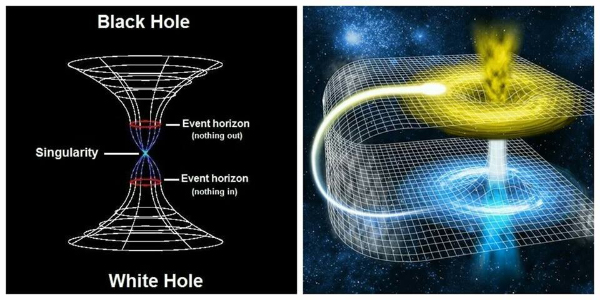
Astronomers still theorize that white holes might answer questions regarding the creation of our cosmos—the big bang. Was it created from a black hole from another universe? Big questions and concerns still linger about white holes. Maybe, one day, with more advanced telescopes and instrumentation, we can start to answer the many mysteries of where a black hole can lead.
Space in Sixty Seconds
Pursue the Perseid meteor shower and witness the return of Orion!
Sky Sights
A waning crescent Moon can be seen by (very) early birds in the stars of Gemini from August 1 to 3.
From August 12 through 16, watch faster Mars pass Jupiter. The two planets will be closest on the morning of August 14, when they will be less than the width of the moon (0.5 degrees) apart. Spot the red star Aldebaran nearby. Also, peek at the return of Orion the Hunter. These bright stars shine low in the ESE sky.
By the time the Moon rolls by from August 26 to 28, Mars will be even farther from Jupiter.
The Moon and Saturn shine close together from August 19 through 21. They will be extremely close on Tuesday night, August 20!
Venus is still too low in the west after sunset. By later September, it will be worth trying to spot the brightest planet.
Mercury is not visible until early September in the morning sky.
August Star Map
Sign Up
Receive this newsletter via email!
Subscribe
See the Universe through a telescope
Join one of the Milwaukee-area astronomy clubs and spot craters on the Moon, the rings of Saturn, the moons of Jupiter, and much more.
Follow Bob on social media
Twitter: @MPMPlanetarium
Facebook: Daniel M. Soref Planetarium


